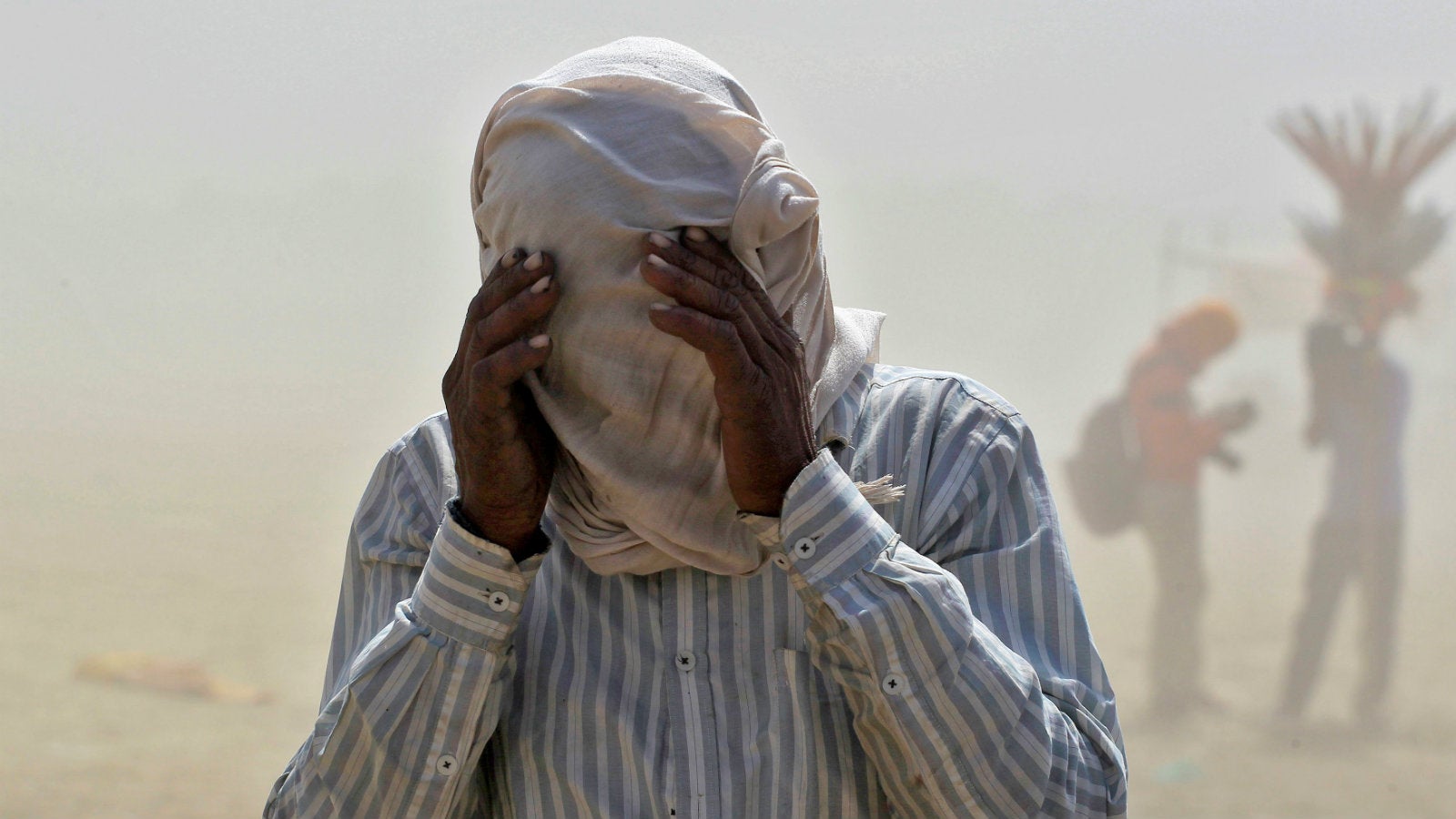What is going on with India’s crazy weather?
The India Meteorological Department (IMD) has predicted another week of extreme weather across the country.


The India Meteorological Department (IMD) has predicted another week of extreme weather across the country.
In the coming days, over thirteen Indian states could be lashed by thunderstorms and heavy winds. These include Haryana, Chandigarh, Delhi, Uttar Pradesh (UP), Bihar, West Bengal, Sikkim, and Odisha. In preparation, schools in Haryana will be closed on May 07 and 08.
The IMD has also warned of another dust storm being “very likely” in isolated parts of Rajasthan, just a few days after one flattened houses and uprooted trees in the same state and in neighbouring UP. That freak dust storm, the worst in at least 20 years, killed over 100 people. Many of those who survived have been left with nothing, as their homes collapsed upon everything they owned.
The intensity of all this bad weather is a reminder of how the much-talked about future of climate change is already here.
“Local thunderstorm formation is impacted by temperatures,” Roxy Mathew Koll, a climate scientist at the Indian Institute of Tropical Meteorology, told the Hindustan Times newspaper. “All over India, temperatures are abnormally high, even if they are not the drivers, they will aggravate the situation by causing the atmosphere to become more unstable.”
While the current spate of bad weather has a lot to do with local conditions, notably the western disturbance, a low-pressure system bringing in moisture from the west towards India, the rise in temperatures makes these types of weather events more frequent and a little more extreme, GP Sharma, meteorologist at Skymet, a private weather forecaster, told Quartz.
Scientists have for long linked rising temperatures with the increasing intensity of storms, and India’s usual summer heat has only been getting warmer year by year. Rajasthan has of late been gripped by a brutal heatwave that has seen many regions record temperatures above 40 degrees Celsius (° C). These unusually high temperatures combined with moisture in the air to create the deadly dust storm last week.
And Rajasthan isn’t alone. Over the past four years, heatwaves have claimed the lives of over 4,600 people across India, the majority in the southern states of Andhra Pradesh and Telangana. At the moment, Andhra Pradesh is in the midst of another heatwave, with temperatures touching 44° C in some parts. Heavy rains struck the state last week, and over 4,000 bolts of lightning reportedly led to the deaths of 14 people in one day.
Research has shown that heatwaves fueled by rising greenhouse gas emissions are likely to make parts of the country uninhabitable by the end of the century, threatening the lives of millions of people. Just a half a degree increase in temperatures is expected to lead to a big spike in the death toll in India over the next five years.
The Indian government has woken up to the need to combat climate change, setting ambitious goals for the use of things like renewable energy sources and electric cars, and making some progress towards them. But the fact remains that effectively tackling climate change will require a massive overhaul of our very way of life.
Until that happens, extreme weather events will be the new normal in India. And as seen in states such as Rajasthan and UP, it’s the most vulnerable who bear the brunt.